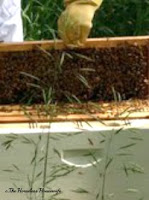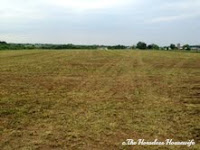We already have begun the process of knocking down the grass, but I wanted to know what else I could do. Only deer ticks carry Lyme disease, and approximately 50% of female ticks are carriers, so how do I lower our odds? So I did some research, and found this great site from the University of Rhode Island named, Tick Encounter Resource Center: http://www.tickencounter.org/ which is dedicated to ticks and their prevention across the U.S.
-Ticks do not jump, or drop from trees, but rather lay in wait for a host on grass or shrubs up to a foot off the ground.
-Ticks always crawl up once they get on you. One preventive measure is to tuck your pants into your socks so that they can't get under your clothing.
-Although ticks can't swim, they can survive a trip in the wash machine or a hot shower. If you find a tick, flushing it down the toilet is the most successful route.
-Ticks can survive a frost and winter.
-You have a 24 hour window to remove a feeding tick before any infections take hold.
-Ticks can survive a frost and winter.
-You have a 24 hour window to remove a feeding tick before any infections take hold.
-Most ticks are sensitive to humidity levels. Lucky for you, if a tick that finds it way into your car, it won't survive a hot, dry Summer's day.
Also, you can now buy treated clothing for tick prevention at many big box outdoor stores or online. These garments remain effective up to 70 washings. Or, if your a hiker or camper, you can ship your clothes/gear to be completely treated by T.E.R.C. recommended and E.P.A. registered company: Insect Shield (click here)
I, on the other hand, will be treating my boots and clothing with a soak/spray combination of Sawyer's, an E.P.A. approved permethrin insecticide designed for such; targeting the lower half of my body so not to accidentally expose the honey bees.
Here's to a tick-free Summer... Cheers!
Here's to a tick-free Summer... Cheers!





